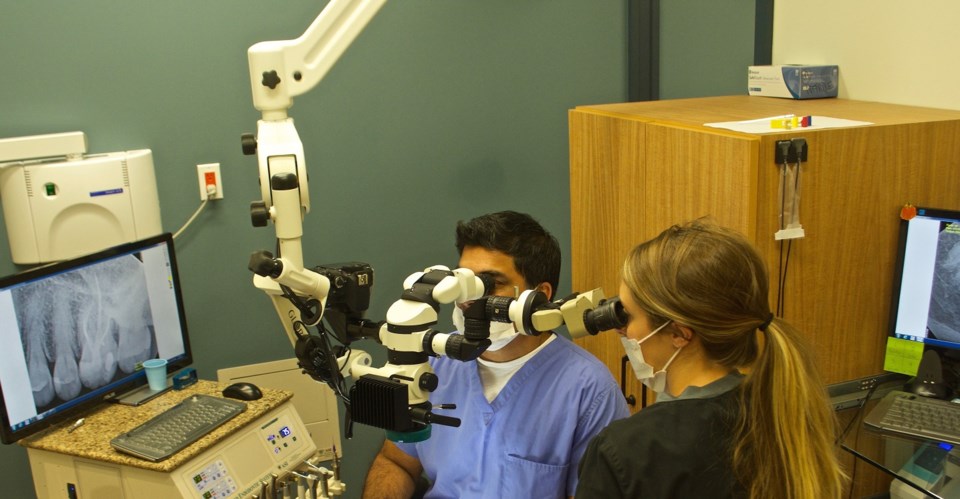At Tri-City Endodontics, Dr. Mark Parhar specializes in treating disease and infection within the tooth, commonly known as a root canal procedure.
"The root canal is the chamber inside the tooth that houses the blood vessels and nerve supply," Dr. Parhar explains. "Every tooth has this chamber and the soft tissue inside this chamber is referred to as the pulp. The function of this chamber is to help the tooth develop—and to protect the tooth.”
While the chamber carries on functioning as we age, various causes can make it susceptible to infection.
"Infection can come from an untreated cavity or crack," Dr. Parhar notes, "or trauma like an accident or sports injury. Once bacteria enter the tooth and cause infection, you get a toothache. There could be ongoing pain, or sensitivity to hot or cold items."
To combat the infection and save the tooth, Dr. Parhar and his team at Tri-City Endodontics remove the infected contents of the chamber.
"We take everything out of there," he says. "We disinfect the chamber and replace the soft tissue, or pulp, with an anti-bacterial filling so it won't become infected again."
While the procedure sounds straightforward, it requires an advanced level of dentistry training including high-level training in the use of microscopes and cone beam computed tomography scanners (CBCT) to take high-resolution 3-D images.
"CBCT allows us to have a complete view of the tooth and bone using ultra low radiation," says Dr. Parhar. "A typical CBCT scan produces about the same amount of radiation as three digital dental ex-rays."
Often the root canal procedure requires more than one visit. According to Dr. Parhar, a patient may need to visit Tri-City Endodontics three or more times.
"One to two visits is pretty typical for a simple, straightforward procedure," he says. "If the tooth can be adequately cleaned, we'll complete the root canal in one visit. However, if the tooth takes a long time to heal, you may need three or four visits. Every tooth and infection is different, which is why we spend time with scans and x-rays to come up with the best possible treatment plan."
While Dr. Parhar prefers to save the tooth through a root canal procedure, there may be times when this is not possible.
"If the tooth has had a lot of work done to it over the years, then the tooth may weaken over time. For example, if the tooth has had several fillings or even a previous root canal, it may no longer be structurally sound. While in most cases it's better to save the tooth, if it's too weak, extraction may be a better option."
For more information about Tri-City Endodontics call 604.492.3034, check out their website, send them an email or visit their offices at 2726 St. John Street, Port Moody.



